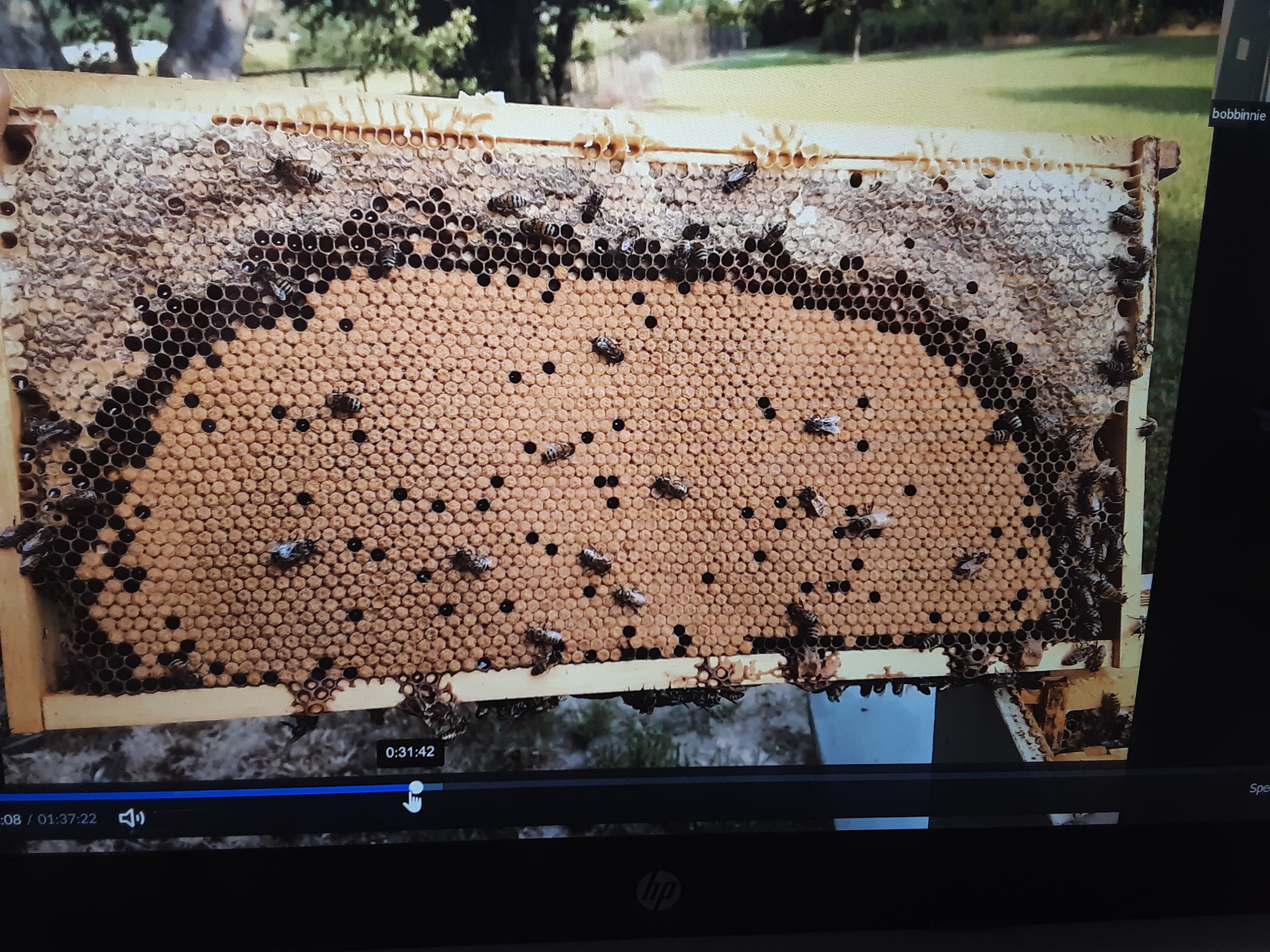Two active (egg laying) queens found in the same colony.
Although the norm is a single mated queen, colonies may have two related queens (mother-daughter condition), which occurs in as much as 20% of colonies in summer. A condition with two queens is thought to result from efficient supersedure or queen events when multiple new virgin queens might emerge within a short period of time. Multiple queen emergence might result following worker confinement of queens to their cells.
Usually, one of the earliest queens to emerge will chew holes in cappedcapping:
the covering that bees add over comb cells containing fully ripened honey or to cap brood that has reached the pupal stage; bee bread cells are not capped queen cells of developing queens. When two queens emerge at close to the same time, the virgin queens might fight. Additional queens will be balled by the workers.
queen cells of developing queens. When two queens emerge at close to the same time, the virgin queens might fight. Additional queens will be balled by the workers.
Burlew R. 2011. Two queens in one hive. Honey Bee Suite. Accessed 2023. https://www.honeybeesuite.com/two-queens-in-one-hive/
McAfee A. 2018. The surprising benefit of laying workers. American Bee Journal 158(10): 1141-1144. https://bluetoad.com/publication/?i=528323&p=69&view=issueViewer and https://bluetoad.com/publication/?m=5417&i=528323&view=articleBrowser&article_id=3195249&ver=html5
“Laying Worker”, YouTube, uploaded by University of Guelph Honey Bee Research Centre, 11 March 2019. https://www.youtube.com/watch?v=ycKdlYzrcOE
Hizsnyai P. 2018. Laying workers. It happens. Fix it. Bee Culture. Accessed 2023. https://www.beeculture.com/laying-workers-happens-fix/